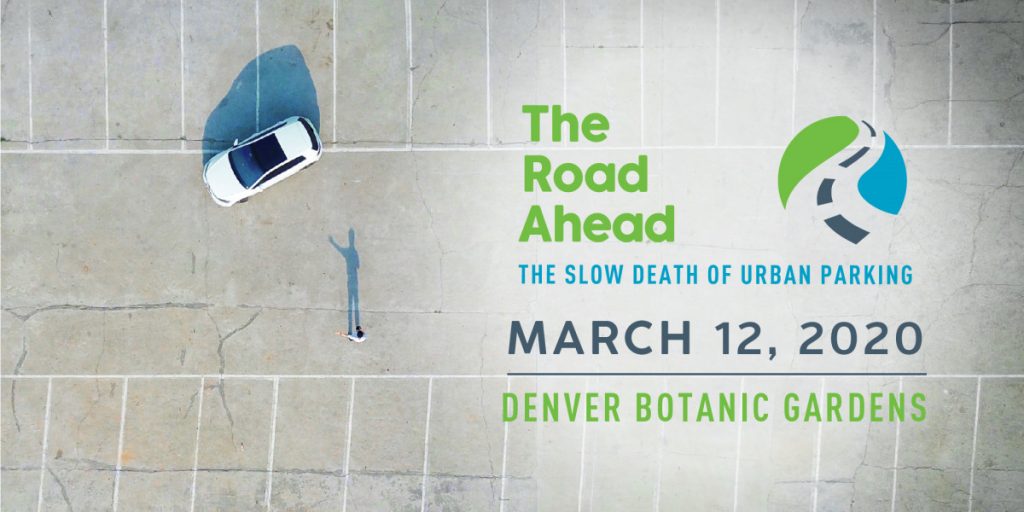ATTAINABLE HOUSING
Homelessness is not inevitable and can be solved – these cities show us how
https://www.theguardian.com/cities/2019/dec/10/homelessness-is-not-inevitable-and-can-be-solved-these-cities-show-us-how
Housing Leaders on Solutions for the Missing Middle – Will production for workforce and low-income housing ever meet demand?
https://www.multihousingnews.com/post/housing-leaders-on-solutions-for-the-missing-middle/?utm_source=whatcountsemail&utm_medium=monthly%20magazine&utm_campaign=cpe-mhn%20guide%20to%202020
MOBILITY
DENVER’S ‘MAIN STREET,’ THE 16TH STREET MALL, GETS READY FOR A FACE-LIFT
A key environmental approval means the long-awaited rethinking and rebuilding of the 16th Street Mall cityscape could begin construction by this time next year. Federal, regional and local partners have worked for a decade on plans to refresh “Denver’s beloved Main Street,” as one urban designer put it, and last week received Federal Transit Administration (FTA) checkmarks on the environmental assessment (EA) of the selected design. Environmental clearance through a process consistent with the National Environmental Policy Act (NEPA), such as an EA, is required for all projects seeking federal funding. The “Finding of No Significant Impact,” or FONSI, constitutes project approval and means that local partners can start seeking a design/build contractor for the mall. In addition to being one of Colorado’s primary tourist attractions, the mall is also RTD’s busiest transit corridor. RTD runs the free mall shuttle buses between Civic Center and Union Station, and about 40,000 people a day use the service. Riders include downtown workers on commutes or lunch breaks, tourists, and crosstown riders connecting to light rail or bus hubs. Now 37 years old, the pioneering transit and pedestrian-only design hosts 200 shops and restaurants, 1,400 hotel rooms, and residential buildings now grown to 1,250 units along 18 blocks and 1.2 miles.
https://www.rtd-denver.com/news-stop/news/denvers-main-street-the-16th-street-mall-gets-ready-face-lift
A CANDID CONVERSATION WITH DAVE GENOVA
You’re leaving at a time of some considerable public turmoil for RTD. Can you remember another time during your career here when there was this much controversy, and what was it about? The agency is not in crisis. I’ve heard that word used by board members, media, stakeholders. We’re delivering right around 99.6 percent of our scheduled bus service and a little over 96 percent of light rail. So while we are missing some trips because of operator shortages, we are working through that, and I don’t think any of these challenges can’t be overcome.
https://www.rtd-denver.com/news-stop/news/candid-conversation-dave-genova
REAL ESTATE
Denver City Council Member Paul Kashmann reports on redevelopment of two former CDOT sites. Kentro Group, owner of two former Colorado Department of Transportation properties at 2000 S. Holly St. and 4201 E. Arkansas Ave., secured a $23.6 – million Tax Increment Financing package last month that will finance infrastructure improvements on the 4201 E. Arkansas site including: on- and off-site traffic mitigation; building extensions to Ash and Bellaire streets through the site, connecting Arkansas Avenue with Louisiana Avenue; replacing the existing utilitarian telecommunications tower with a more attractive structure serving the same purpose; connecting basic city utilities (water/sewer/gas/electric) throughout the site; and more. Following is Kentro’s statement of current plans for the two properties. I will put together a Development Oversight Team, in consultation with local registered neighborhood groups, to work with Kentro on an ongoing basis to carry information about the two projects to the surrounding communities and bring community concerns to the developer.
2000 S. Holly Street: 10.5 Acres of For Sale Housing: Lokal Homes submitted the third round of the Site Development Plan for 198 for-sale townhomes on 10.5 acres and approval is expected in the first quarter of 2020. Demolition and site work is expected to begin in the first or second quarter. 1 Acre of affordable housing or retail/office: Kentro will resubmit application for a 60-unit senior affordable housing project with the Colorado Housing and Finance Authority in early 2020. If application is denied, we may resubmit in 2021 or shift focus to retail/office onsite by using an existing building.
4201 E Arkansas: The first few months of 2020 will be spent working with the civil engineer, traffic engineer, multimodal consultants, marketing team, and retail tenants to design the site plan for Site Development Plan submittal and subdivision. If everything goes smoothly, horizontal construction is expected to begin in the middle of 2021. Once the site plan is finalized, we will be in a position to start neighborhood engagement on the park design in the northeast corner of the site. The goal is to start construction on the affordable housing project by early 2021 as it can stand on its own from a design standpoint.”
Denver City Council Member Amanda Sawyer reports an update on the property at 50 South Colorado Boulevard. Our office has received a number of complaints about the abandoned church located at 50 South Colorado Blvd. This property is privately owned and set to be redeveloped into townhouses; however, the redevelopment cannot occur because Verizon Wireless holds a valid lease for a cell tower in the church. Although that lease could continue thru 2023, Verizon is working to secure an alternate location. In the meantime, the property owner has taken steps to ensure the safety of the community and the neighborhood by limiting access to the site. The Denver Police Department is aware of the community’s concerns and taking steps to help maintain the safety and security of the property. If you see anyone at this location, please call 911 and report it immediately. Our office will keep you posted as the situation moves towards resolution.
Denver City Council Member Kendra Black reports on a hotel converted to into housing for people experiencing homelessness. A former hotel site at 3737 N Quebec St. has recently been converted into 139 much needed affordable studio apartments for individuals transitioning out of homelessness. The innovative Fusion Studios project, led by the Colorado Coalition for the Homelessness, delivers needed homes quicker than a traditional affordable housing development. The Fusion Studios is the first affordable housing project made possible with land acquisition resources from a bonding partnership between the City and County of Denver and the Denver Housing Authority.
https://www.denvergov.org/content/denvergov/en/housing-information/news/2020/FusionStudios.html
REAL ESTATE AND MOBILITY
Transport’s historical, contemporary and future role in shaping urban development: Re-evaluating transit-oriented development (Paywall)
This paper reviews transport’s historical, contemporary and future role in shaping urban development since industrialisation. Previous definitions of Transit Oriented Development (TOD) starting in the late 20th century are challenged. Three distinct eras of TOD are identified: from the mid-19th century to early 20th century; Planned TOD in the mid-20th century; and TOD for urban regeneration and/or urban expansion since the late 20th century, now featuring rail and bus rapid transit, cycling and walking, shared use mobility, and automated transport. Future links with disruptive transport technologies are highlighted as themes that must be examined for assisting TOD’s further development. The authors make the case, using empirical evidence from selected TOD applications from around the world, that high frequency transit service is essential for successful contemporary and future planned TODs. TOD is then redefined for the 21st century and best practice policy recommendations are made.
https://www.sciencedirect.com/science/article/abs/pii/S0264275118316895
Walkable places are growing in value almost everywhere
Our estimates are that a single additional point of WalkScore is worth $3,500 in additional home value. Real estate analytics rivals Redfin and Zillow have both found statistically significant correlations between walkability and home values for a wide range of US cities.
http://cityobservatory.org/walkable-places-are-growing-in-value-almost-everywhere/
Parking is the missing piece of the smart city puzzle
The first piece that needs to be put in place to transform parking assets into mobility hubs is an extensible technology layer to regulate access, control revenue, and integrate high-tech user-facing features…To unlock their full potential, parking assets need to connect with value-added mobility service partners. A shared open-API platform is the foundation for forging these partnerships and allowing assets to seize new opportunities in the mobility market. With the right operating system at their core, parking assets can be hubs that support every facet of new mobility rather than a single feature of old mobility: parking. When all the fixtures of new mobility converge inside garages rather than on streets, we can take lock out of the grid and put smart back into the city.
https://www.smartcitiesdive.com/news/parking-is-the-missing-piece-of-the-smart-city-puzzle/569785/
How Will Autonomous Vehicles Impact Cities?
Using data from Singapore, the Lab’s “Unparking” study found that autonomous shared cars, which pick up and drop off multiple owners per day before finding a free parking spot, would cut the need for cars In Singapore from the existing 676,000 to 200,000. This would reduce the need for car parking spaces in the city from 1,370,000 spaces today to a potential 410,000, marking a 70% reduction. In other words, the existing 15.8 sqkm of parking space in the city today would reduce to 4.7 sqkm. As autonomous vehicle technologies improve, so too will the potential vacant land for development increase.
https://www.archdaily.com/931640/how-will-autonomous-vehicles-impact-cities
The Age of the Electric Bicycle
On comparison, an e-bike is able to attain an average speed of 22km per hour, about 50% faster than the average 15km per hour on an ordinary bicycle. At such speeds, an e-bike might even be faster than a car, especially in congested cities such as New York and Boston. These advantages open up cycling as a legitimate form of commute. In the upcoming years, e-bike sales are expected to top 40 million units worldwide, while only 12 million Evs (cars and trucks) are expected to sell in 2025. This is due to three main factors; low cost, convenience, and utility. Depending on your lifestyle, an e-bike might be better suited than a car — not to mention the perks that come with it:
• Road taxes and car insurance exemption
• The ability to park almost anywhere
• Unaffected by congested roads and traffic jams
Another key advantage e-bikes have against other electric vehicles is the unneeded implementation of charging networks. For most e-bikes, charging merely require plugging the battery into a standard power socket — which is the same as charging your iPhone. This lack of infrastructure limitation allows the e-bike to penetrate different cities and countries, at a much faster pace.
https://medium.com/swlh/the-age-of-the-electric-bicycle-2e184ef09d2f
An Overlooked Contributor to the Affordable Housing Crisis: Parking Requirements
First, parking spaces are expensive. Entire levels of parking garages sit empty day and night. A good rule of thumb is that a multi-family parking space can cost the renter around $1,200 a year because building costs are passed through in rent. (And the beloved below-grade parking that we all want costs twice as much to build.) Because of these parking obligations, I have had to develop multi-family buildings where entire floors of parking garages sit empty overnight. Second, there is an opportunity cost–parking to code often limits what else a developer can do, as it utilizes space that could be dedicated to better amenities for the community and better design integration with the neighborhood. Meeting parking requirements is one of the first make or break tests for a deal to determine its viability, and it establishes the rest of the building form around it.
https://www.dmagazine.com/commercial-real-estate/2020/01/an-overlooked-contributor-to-the-affordable-housing-crisis-parking-requirements/
Why multifamily developers are looking to parking lots
The parking industry is still generally strong in the U.S., with revenue up 1 percent annually since 2014, according to a report released in May by the research firm IBISWorld. But the same report forecasts a bumpy road ahead, with annual revenue growth shrinking to 0.2 percent through 2024 and a wave of consolidation hitting the industry. The conversion of parking lots on a large scale could radically shift the housing situation in geographies across the globe. All of the parking lots in Britain, for example, have the potential space for 1.2 million homes, according to The Guardian. There are 500 million parking spaces and 325 million residents in the U.S.; that’s a lot of space that could be freed up for housing development if parking requirements continue to ease up. Cities are gradually shifting their thinking around this issue, but bigger changes are underway. The rise of autonomous vehicles will transform the way people commute, and have a huge impact on just how much parking is really needed at all.
https://www.theinvestor.jll/news/us/residential-multifamily/why-multifamily-developers-are-looking-to-parking-lots/
Car-Free Market Street Starts Wednesday
“Just today I was reading about New York’s 14th Street project, which limited car and truck access to improve bus service and cycling,” wrote Radulovich in his comments to Streetsblog. “In just a few months the results are really impressive–24 percent more transit riders on weekdays, 30 percent more on weekends, buses moving 30-40 percent faster, and bus trips 10 minutes shorter on average. Detractors predicted spill-over traffic on parallel streets, but that didn’t happen.”
https://usa.streetsblog.org/2020/01/27/americas-next-major-car-free-street-will-be-in-san-francisco/
Former airport turns into complete community
Austin was one of the first cities in the US to adopt a traditional neighborhood development (TND) ordinance, the forerunner of a form-based code, in 1997. Austin’s ordinance served as a model for other cities at the time. Starting in 1997, when ROMA was hired, the city saw Mueller as an opportunity to create a laboratory for TND and green building and change the pattern of sprawl that had long dominated development. The city sought sustainability, and affordable housing, and a project that would stand on its own financially. There would be no compromise on those three goals… Maybe the greatest disappointment of Mueller stems from its success. Aside from the third of properties that are affordable by agreement, the project has some of the highest real estate prices in Texas. This may not be surprising, given that Austin is one of the fastest-growing cities in the nation (22 percent population growth this decade so far).
https://www.cnu.org/publicsquare/2020/01/27/former-airport-turns-complete-community
Car-Free Cities: 7 Interesting Projects from Around The World
There are enough reasons to incentivise other modes of transportation. Many large cities have already begun their fight against private car ownership. We observe them banning cars from certain areas, changing infrastructures, or introducing fees to decrease the appeal of owning a car. Let’s take a look at the most challenging projects from around the globe.
https://medium.com/inside-freenow/car-free-cities-7-interesting-projects-from-around-the-world-35e5de318e3c
HOW A ROAD DIET CAN AMPLIFY THE IMPACT OF PLACEMAKING
Every placemaking project is also a transportation project. Whether you’re improving a park, a plaza, a waterfront, or a public building, odds are that there is a street on one or more sides of your site—and that street can make or break your placemaking ambitions. One of the four characteristics that Project for Public Spaces of what makes a successful place is “access and linkages” because whether or not people can get to a public space safely and conveniently has a strong influence on the number and diversity of users. But streets can also become an extension of a public space or a place in their own right, with amenities and activities that invite people to slow down and stay a while.
https://www.pps.org/article/how-a-road-diet-can-amplify-the-impact-of-placemaking
Blind Spots – How Unhealthy Corridors Harm Communities and How to Fix Them
Transform unappealing, unhealthy corridors that discourage physical activity and social interaction into vibrant, attractive destinations that catalyze further community development and investment. Blind Spots looks at the impact of unhealthy corridors, why communities all over the country have them, and what can be done to change them. It explores the land use and transportation decisions that give rise to and perpetuate their existence, as well as opportunities to use policy and practice levers to reshape them into community assets.
https://uli.bookstore.ipgbook.com/blind-spots-products-9780874204230.php?page_id=21
DEN site selected for Rocky Mountain Real Estate Challenge
Land Title Guarantee Co. and NAIOP Colorado, the Commercial Real Estate Development Association, selected a portion of a 60-acre parcel owned by Denver International Airport at East 61st Avenue and Peña Boulevard in Denver as the subject for the 18th annual Rocky Mountain Real Estate Challenge to be held Tuesday, April 28.
https://crej.com/news/den-site-selected-for-rocky-mountain-real-estate-challenge/





















